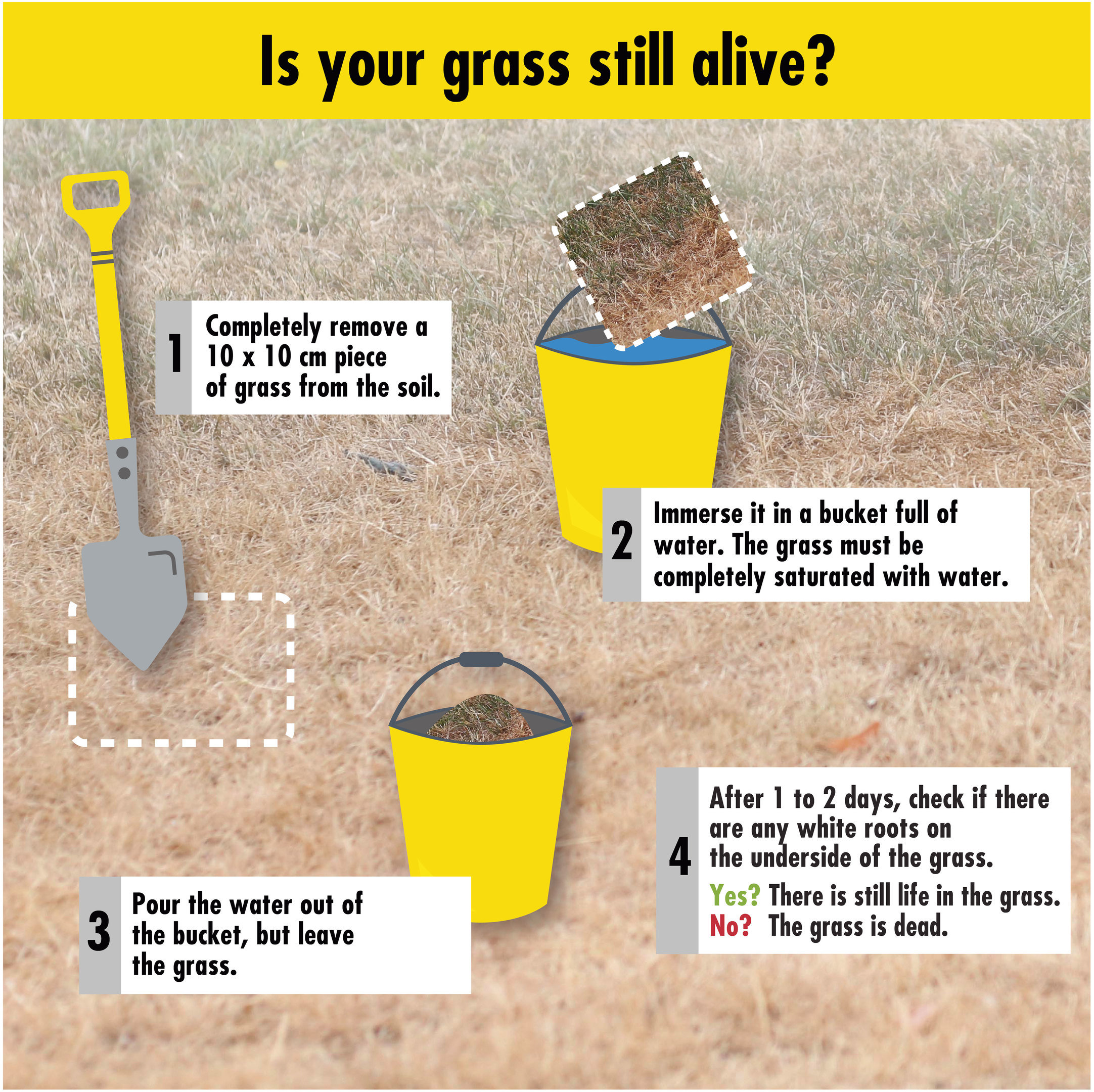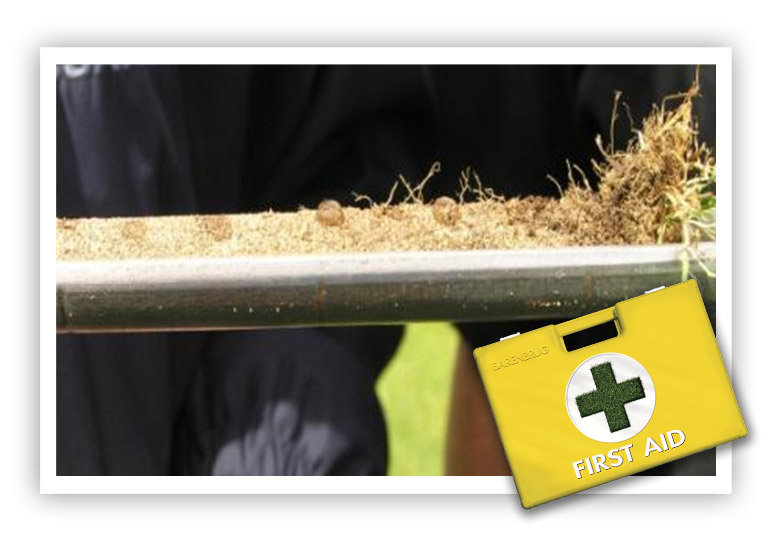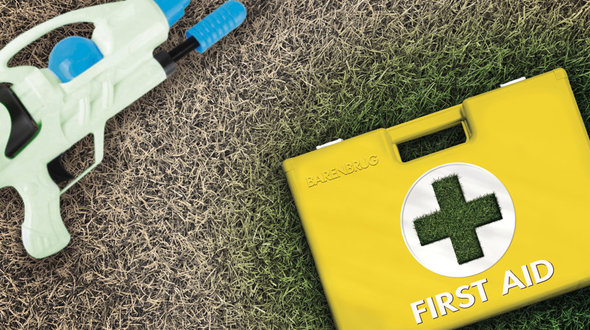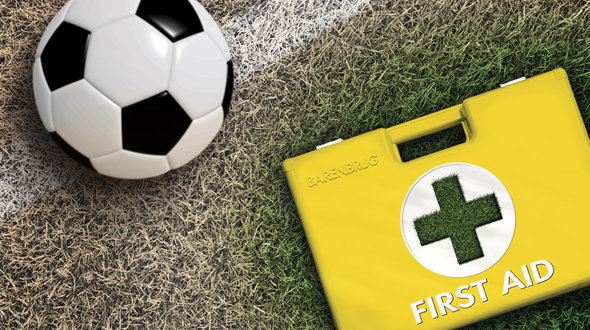At temperatures above 25 ℃, many grasses enter into a state of rest. There is much difference between grass varieties. Some varieties can survive the extreme heat and drought, while others succumb. The following simple test will tell you whether the grasses in your turf are still alive.
Vitality test:
- Remove a piece of turf from the ground with a scoop.
- Put this in a bucket with water and allow the grass clump to completely saturate.
- Let the water run out of the bucket, leaving the grass clump behind.
- If white roots appear on the underside of the clump after 2 to 3 days, the grass plants are still alive.
Conclusion step 1: White or brown roots?
The grass plants that produce white roots can recover if moisture is made available. If no new white roots appear between the brown roots, the grass plant is unlikely to have survived the heat and drought.
Caution: Danger!
Because the existing grass plants are very weak or dead, there will be plenty of room for new plants. These may include unwanted plants such as annual meadow grass or weeds. Many seeds of these plants probably remain in the soil and will germinate if moisture is made available. If the turf is not assisted in its recovery, these plants will take over, resulting in the development of ugly and weak turf.








